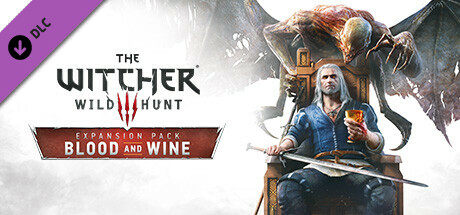
Unlike Hearts of Stone, the second and final expansion pack for The Witcher III: Wild Hunt ends up adding a whole new region, and with a whole new region also comes a whole lot of extra enemies! So as Geralt wanders the picturesque villas and vineyards of Toussaint, vaguely a mish-mash of France and Italy, the monsters that Geralt meets are pretty different from the war-torn impoverished villages vibe of Novigrad and Velen; or the Norse-inspired isles of Skellige. And, of course, as the expansion's name would imply... the expansion is a huge vampire-inspired one. Having been absent in Witcher II and taking a back-seat in the base game, they finally come in full force with a lot of variations and a lot of new lore!
Again, as usual, this is a monster review and commentary, so no named characters as much as I can help it. The enemies will be ordered as they show up in the in-game bestiary, and as a refresher, here are the monster categories in the world of Witcher III -- Beast, Cursed One, Draconid, Elementa, Hybrid, Insectoid, Necrophage, Ogroid, Relict, Specter and Vampire.
- Click here for the first part of Witcher III's bestiary.
- Click here for the second part of Witcher III's bestiary.
- Click here for the next part, Blood and Wine.
- Click here for other reviewing monsters.
___________________________
Beasts:
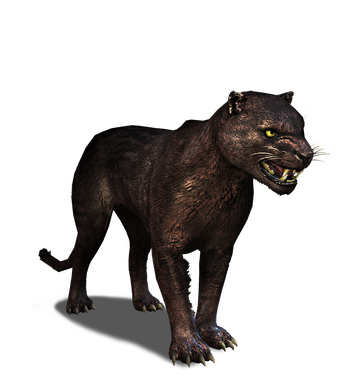
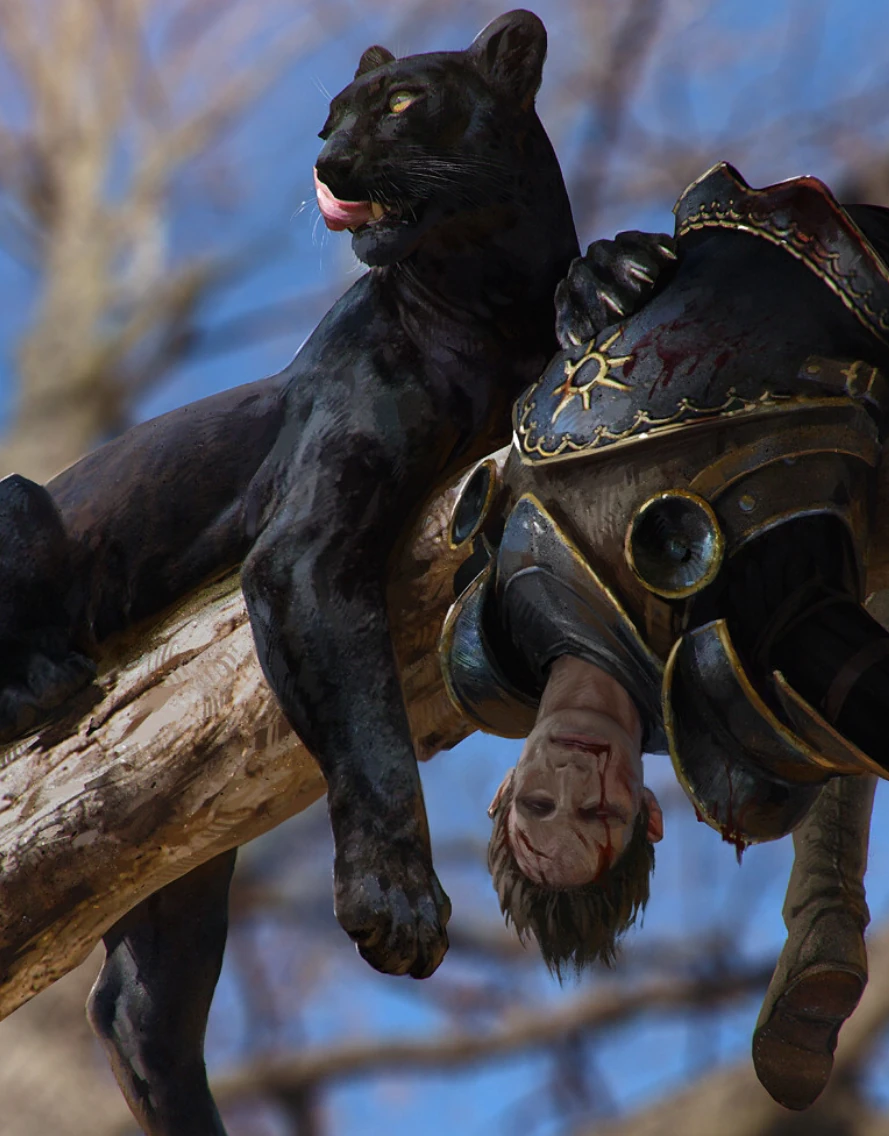
Panther:
We'll quickly go through this one, as the single new common 'Beast' enemy, the panther. Finally, we have the full set of classic fantasy RPG 'big angry animal' enemies in the wolf, bear, boar and predatory cat. Panthers are cool, but they otherwise basically behave like wolves. Again, it's naet to see some variation in the wild animals that roam the lands of Touissant, and while it's a small thing it does help to make the world of the Witcher just that bit more richer.
Since there really isn't a whole ton to put in the bestiary, I do like that Witcher 3 talks about how more superstitious people think that panthers are spirits of those who die in their sleep, causing these villagers to drag the bodies of those who do die that way into the forest... which instead ends up causing cholera epidemics. Just because the world is actually full of spirits and rituals doesn't mean every single creature in the world needs a magical ritual to deal with. Sometimes they are just cats. The Panther basically gives some of the game's quests an extra model to play around with. Panther ghosts! Panther spirit guardians! Golden Panthers randomly in an illusion land!
___________________________
Insectoids:
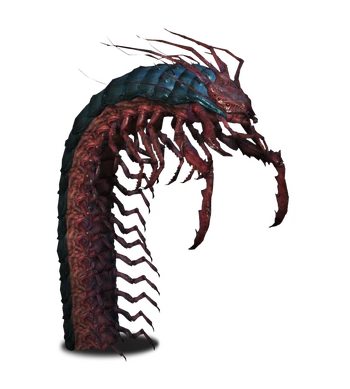
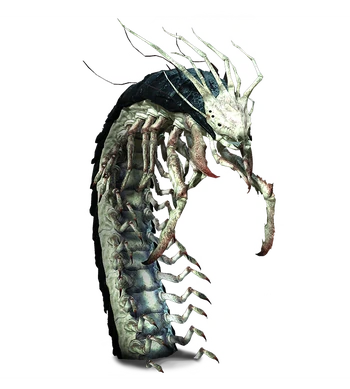
Giant Centipede & Pale Widow
Unlike my coverage of the base Witcher III game, I'm going to mix things up a little. We're jumping to the insectoids, and to my great surprise, apparently they decided that Touissant needs to have two entirely new breeds of insectoid monsters, in addition to Hearts of Stone's Arachnomorphs. Neat! The most exciting one, and the one with a brand-new model, are the Scolopendromorphs (based on the real-life genus of the largest living centipedes, Scolopendra) and their white counterparts, the amazingly-named Pale Widows. They sure do move like centipedes, but their way of attack actually resembles more of a combination of fictional 'giant worms' like Graboids or Dune worms as well as the real-life bobbit worm. I do appreciate the additions that make the giant centipedes look so much cooler than just 'centipede, but big', too. The network of antennae that resemble scraggly hair, the giant extra mantis-claws beneath the exaggerated fangs... and best of all, and most easily seen in these still screenshots, are their set of three beady eyes.
In combat, I do appreciate just how much more interesting the enemies in the expansion are, there's more to fighting them than just 'add the right oil to your weapon'. And I do like that they actually afforded the same creativity in mechanics to common random enemies like the centipedes and not just for the story bosses like Hearts of Stone's Zelda-esque bosses. The Giant Centipedes, above all, burrow into and out of the ground before bursting out and shooting venom from afar. They can only be damaged from their vulnerable underside (but their many legs can parry sword blows), and they move really, really fast -- something that anyone who's seen a real-life centipede can definitely attest. The trick here, of course, is to use the under-utilized Yrden spell -- normally only really practical when used against ghosts to force them to materialize, when fighting against the centipedes you need to try and lay down the Yrden circle at around the time the centipede bursts out to stun it in place. I do really like this; when you first fight the thing you're kind of baffled but once you figure out the trick they're not that much more dangerous if you perform the move correctly.
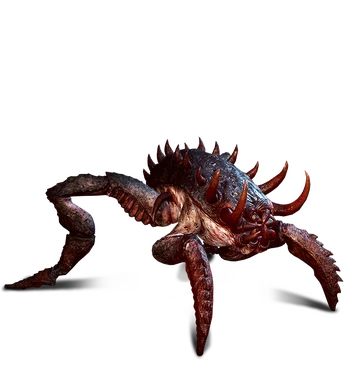
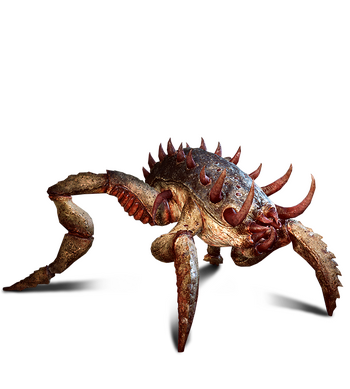
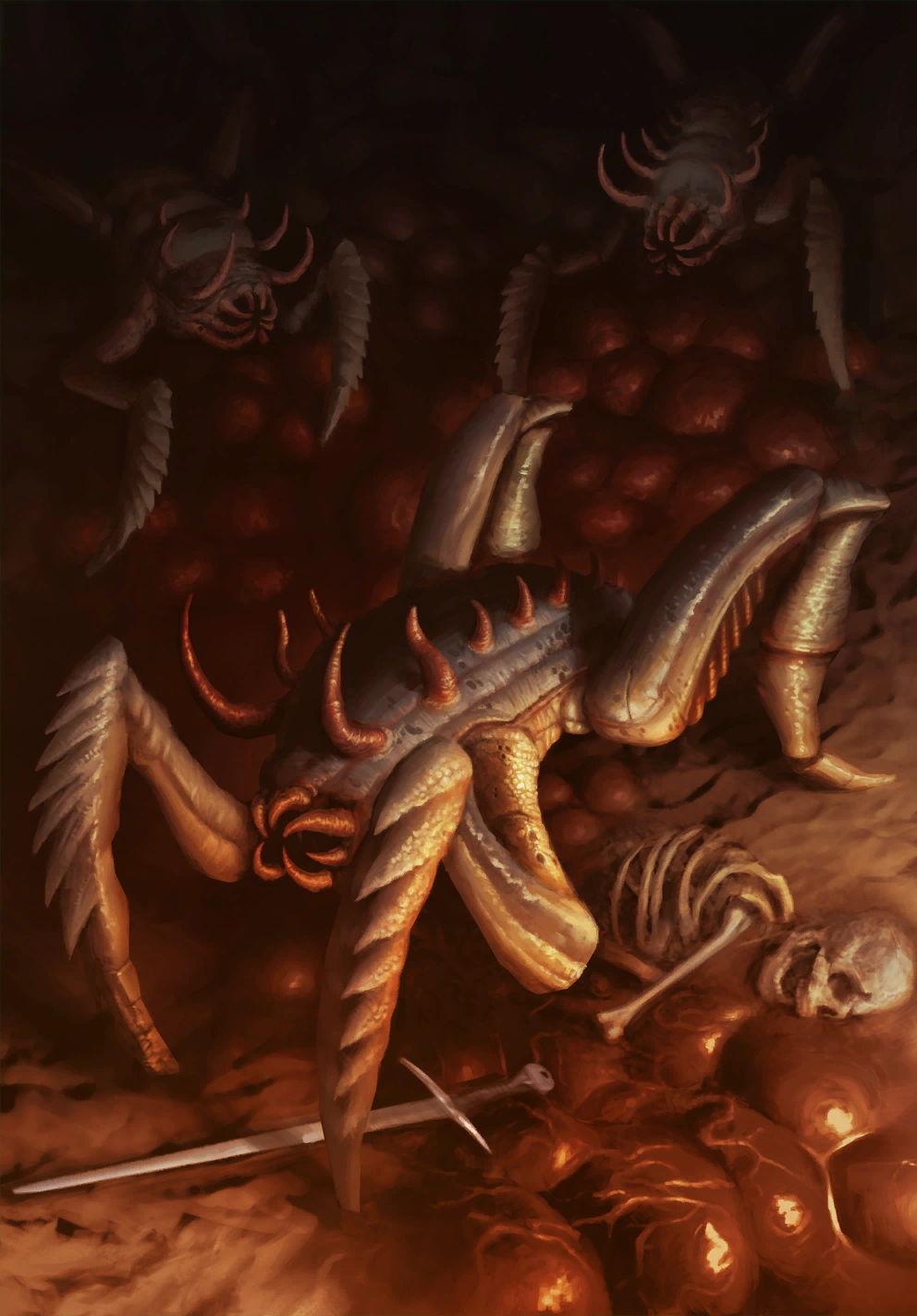
Kikimore
Hey, we get the Kikimore in this one! It's also known as Kikimora, and also known as that giant spider-beast that Henry Cavill fights in the opening of the Netflix show. The mythological Slavic Kikimora has absolutely nothing to do with giant insects, though, and is instead a harmful forest or swamp spirit resembling tiny shadowy old women that can be 'invited' into houses and wreak havoc, and is one of the traditional folklore explanations for sleep paralysis where it's said that they will sit on sleepers' chest and strangle them. Some legends portray them as being more ambivalent, causing havoc if the house is messy but acts as a good household spirit if the house is in order. Later on, the Kikimora would lend its name to Kikimora palustris, a genus of dwarf spiders...
Which, in turn, inspires Witcher's Kikimora. And... it's kind of interesting! Sure, it shares movement assets with the Arachas and Endrega that are already in the game, but the Kikimore are a lot more subterranean, bursting in and out of the ground and making giant tunnels in the ground like ants. There are two types, the Kikimore Worker, which is around the size of a big dog, and the Kikimore Warrior, which is like the size of a bear. If you think the size difference is ridiculous, it's actually accurate to real-life ants, where the workers and 'super-major' soldier ants can differ dramatically in size. We don't get to fight any queens, regrettably, but they do exist when the Kikimores show up in the first Witcher game. I do really like the design, the puckered multi-fanged mouths are creepy, and I really do find the weird look of the four-legged insectoid body to be pretty bizarre -- that weird, domed body with horns just doesn't really look like a proper insect, but thanks to those jointed legs coming off of it, you end up with this very alien, creepy-looking insect monster. Like the Endrega, I do like that they're not just simply upsizing an insect but took the time to make it look like a grotesque combination of an arthropod and other creatures while still retaining the bug-esque silhouette. I don't have much to say here, I am a huge bug monster fan and I do like to fight giant fantasy monster ants. I also absolutely love just how everyone in the game are terrified of Kikimore and their eggs.
As a side-note, as much as I love the far more buggy-looking Kikimore of Witcher III, I kind of feel like the weird and extremely alien-looking Witcher I Kikimore is kind of significantly cooler and makes the Kikimore stand out a lot more compared to the other arthropodal enemies of the game.
___________________________
Cursed Ones:
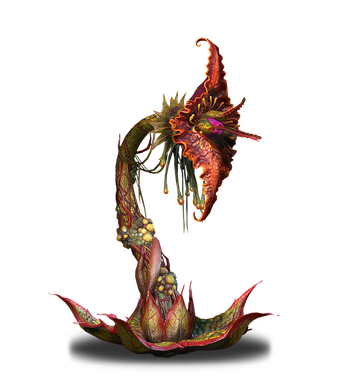
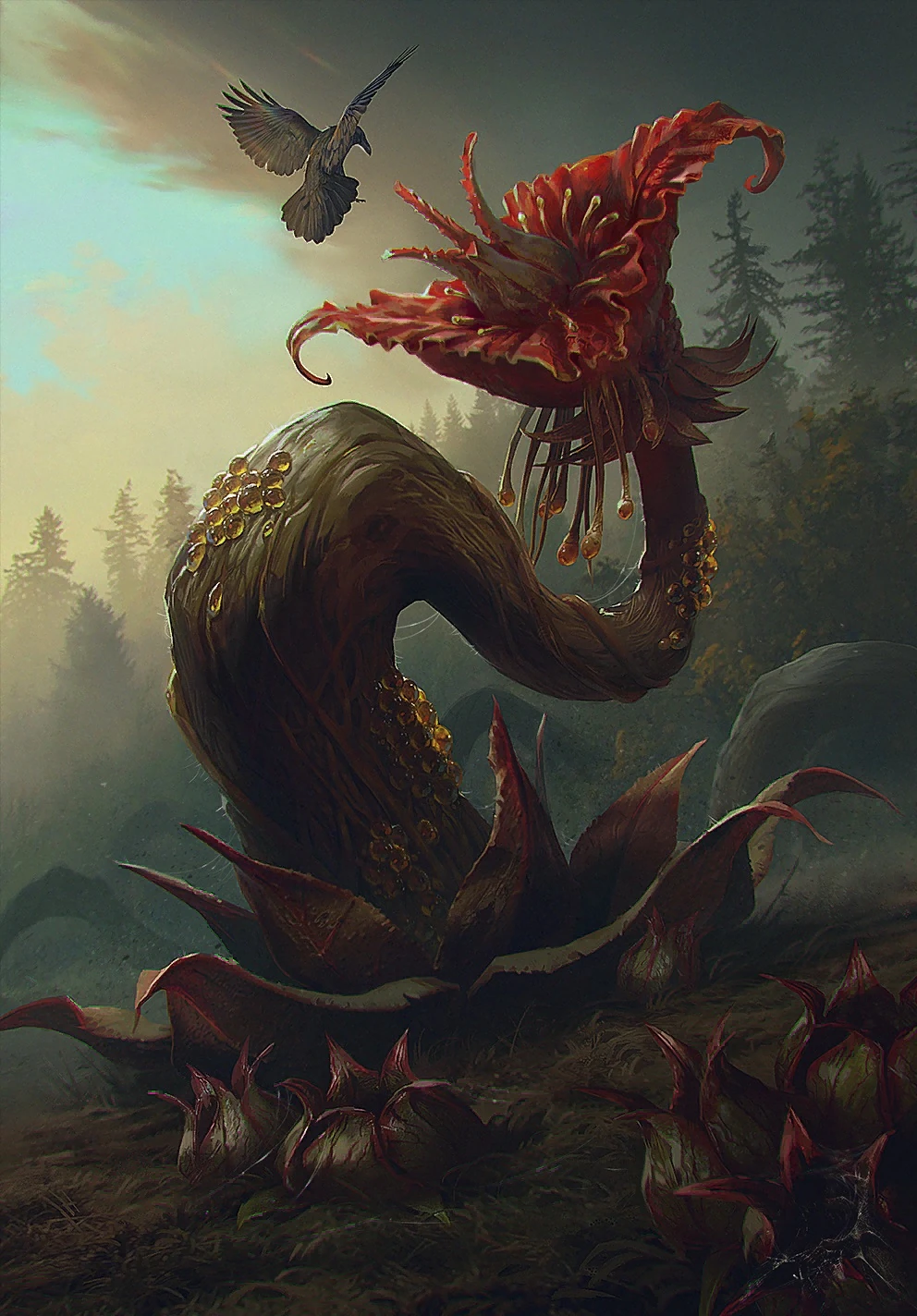
Archespore
A pretty prominent creature that shows up a lot in Touissant, the Archespore is a very interesting creature. It's classified as a "Cursed One" enemy, which is a category that has previously housed only the likes of werewolves and botchlings... actual humans that have been cursed. But apaprently the Archespores are cursed plants, grown in soil fertilized by the blood of dying men. They are often described in-universe as looking like sundew... but nah, the Archespore really look more like just a regular flower, albeit with a very monstrous vine and a nasty... whatever the hell's going on at the center of that flower. It sure is a very cool looking monster plant, and the more I look at it the more details I can see. Like those almost teeth-like yellow bits around the stamen, the vines hanging down from its 'neck'...


Archespore
A pretty prominent creature that shows up a lot in Touissant, the Archespore is a very interesting creature. It's classified as a "Cursed One" enemy, which is a category that has previously housed only the likes of werewolves and botchlings... actual humans that have been cursed. But apaprently the Archespores are cursed plants, grown in soil fertilized by the blood of dying men. They are often described in-universe as looking like sundew... but nah, the Archespore really look more like just a regular flower, albeit with a very monstrous vine and a nasty... whatever the hell's going on at the center of that flower. It sure is a very cool looking monster plant, and the more I look at it the more details I can see. Like those almost teeth-like yellow bits around the stamen, the vines hanging down from its 'neck'...
Geralt never actually encounters an Archespore that's hiding, I don't think, and all the encounters has the Archespore already rampaging, but apparently that's how they lure in and attack their prey, where they will burst out of innocuous bulbs (which they actually do in combat!) to kill humans. The Archespores will either try and snap at humans with their jaw-like petals, shoot acid, create exploding bulbs, and unleash a stream of vines, or bury back into the ground and emerge elsewhere where a bulb is at. I do really like that idea, that the 'central' Archespore body moves in and out through these different bulbs that are part of the same plant. That's a pretty fun video game monster concept. And, y'know, being a giant piranha plant monster is always a plus point in my book.
Interestingly, throughout a pretty fun quest chain, Geralt would find that someone is weaponizing the Archespores and cultivating them to sabotage rival wine fields, causing them to grow and kill the farmers there. Pretty nasty!
___________________________
Draconids:
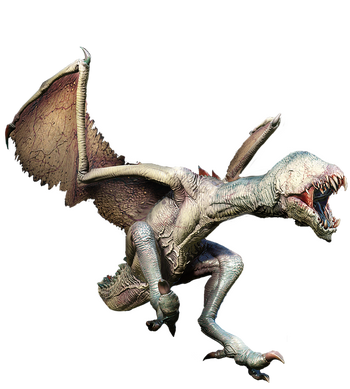
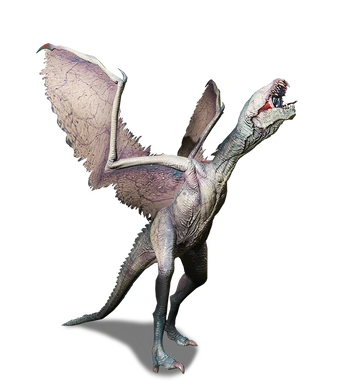
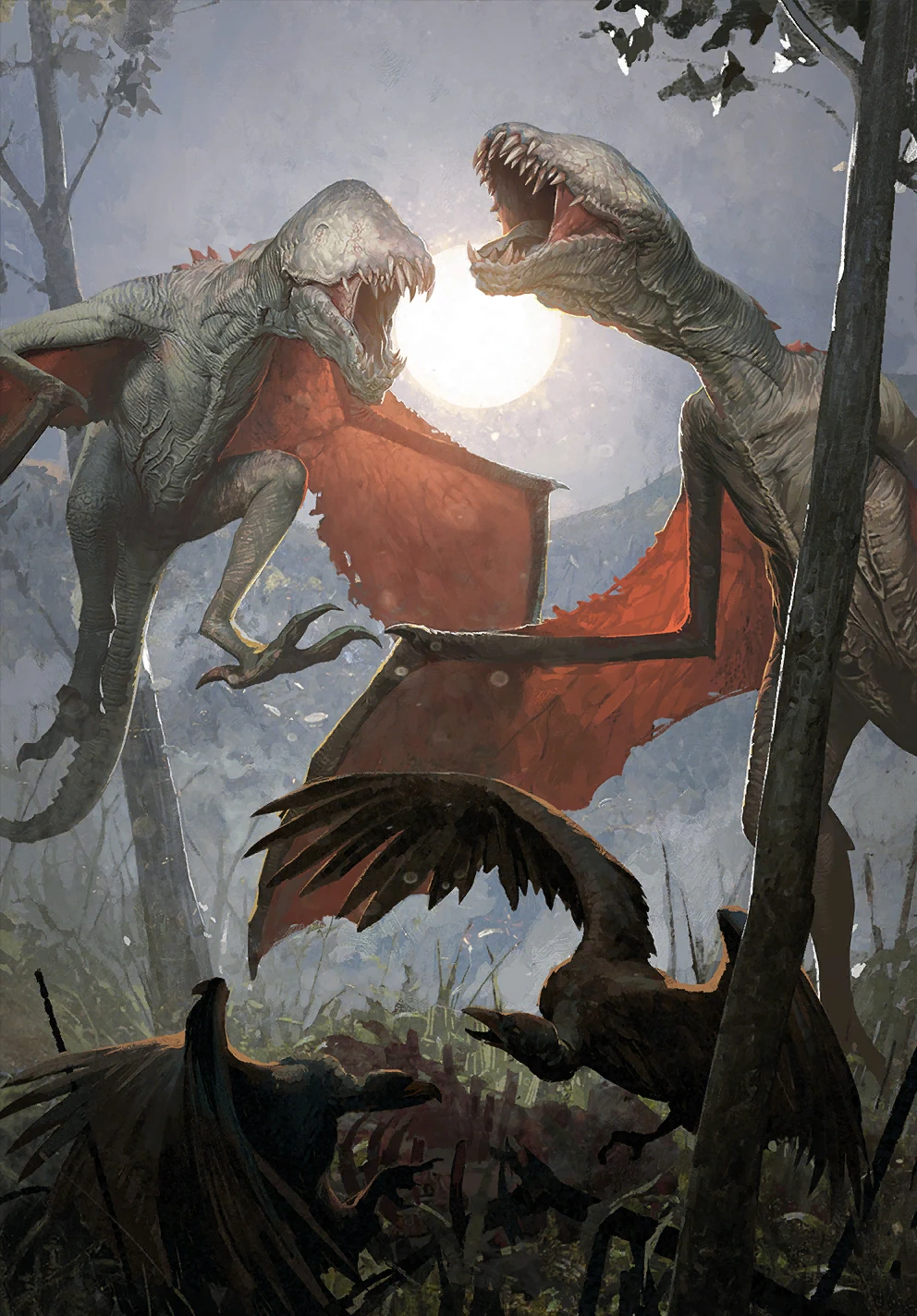
Slyzard
Known as 'Slyzard' in the games and translated as 'Dracolizard' in the novels, the Slyzard is an interesting creature that has been name-dropped many times in Witcher II and III, and finally makes its appearance here. And... all the draconid enemies are essentially 'palette swaps' of each other, but the Slyzard does have unique-looking wings that resemble some sort of a bat with its clear, see-through fleshy wings (very appropriate considering the theme of Blood and Wine) and, most interestingly, has a very cool looking eyeless head that ends in this nasty maw full of teeth.
Known as 'Slyzard' in the games and translated as 'Dracolizard' in the novels, the Slyzard is an interesting creature that has been name-dropped many times in Witcher II and III, and finally makes its appearance here. And... all the draconid enemies are essentially 'palette swaps' of each other, but the Slyzard does have unique-looking wings that resemble some sort of a bat with its clear, see-through fleshy wings (very appropriate considering the theme of Blood and Wine) and, most interestingly, has a very cool looking eyeless head that ends in this nasty maw full of teeth.
It's noted just how similar the Slyzard looks to a Forktail or a Wyvern, but are so much more dangerous... because unlike those two, Slyzards can actually breathe fire and unleash Fus Ro Dah sonic screams. They won't just settle for maiming, biting or stabbing you with its tail. Which, like its 'lesser' draconic brethren, Slyzards also have access to. I do really like the blind, eyeless face that they have going on, though, and that might very well make the Slyzard my favourite draconid enemy in the game.
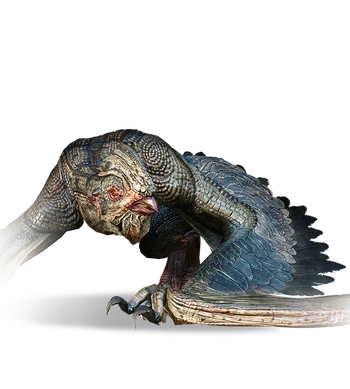
Silver Basilisk
I don't usually do variants, but the Silver Basilisk storyline is one that I actually really do like. The Rgeulus Platinum, as it is called in-universe, is a near-extinct sub-breed of the basilisk which only has a single specimen left. And I really do like just how prIntetty the textures on this giant chicken-dragon is... and it's one of the few 'named' enemies that's not a sentient being like a Doppler, Succubus or Vampire that you can actually spare. And the reason being? The Silver Basilisk is actually domesticated and kept within a nobleman's lands, and the Silver Basilisk's victims are basically trying to claim insurance fraud and trying to get the nobleman (who's desperate to keep the silver basilisk and have it reproduce) to pay for their broken goods... only to get themselves killed because, y'know, the whole 'trespassing into a basilisk's territory' thing.
I don't usually do variants, but the Silver Basilisk storyline is one that I actually really do like. The Rgeulus Platinum, as it is called in-universe, is a near-extinct sub-breed of the basilisk which only has a single specimen left. And I really do like just how prIntetty the textures on this giant chicken-dragon is... and it's one of the few 'named' enemies that's not a sentient being like a Doppler, Succubus or Vampire that you can actually spare. And the reason being? The Silver Basilisk is actually domesticated and kept within a nobleman's lands, and the Silver Basilisk's victims are basically trying to claim insurance fraud and trying to get the nobleman (who's desperate to keep the silver basilisk and have it reproduce) to pay for their broken goods... only to get themselves killed because, y'know, the whole 'trespassing into a basilisk's territory' thing.
___________________________
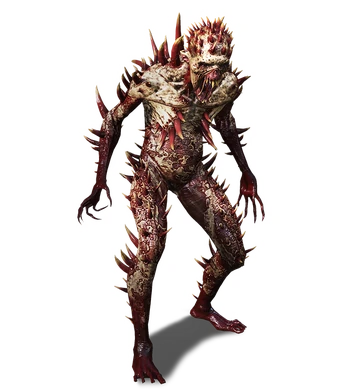
Scurver
Mmm, we get a token new Necrophage, but it's sort of basically a reskinned Rotfiend in combat tactics -- only exploding in spikes instead of in an explosion of gore. Still, it's nice to have these sort of 'regional' enemies nonetheless, something that I really wished that Hearts of Stone did a bit more of. Scurvers have a pretty cool model when you stop and look at them well. The spikes are neat, for sure, but I do like the fact that the spikes also form some sort of hair on this creature's head. The bestiary notes that when they are near death, the enzymes and gases within their bodies cause an eruption that flings the bony spines outwards. Their bestiary entry really doesn't talk too much about them that differentiates them from other stronger Necrophages, though, other than a nod that they sometimes get worked up and want to eat living flesh. Not the most interesting variant, but a welcome one nonetheless.
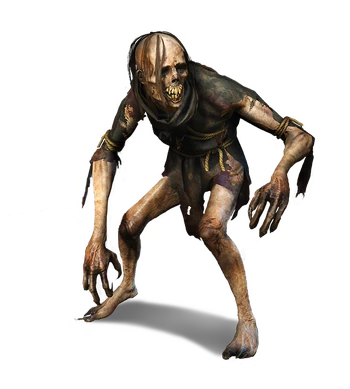
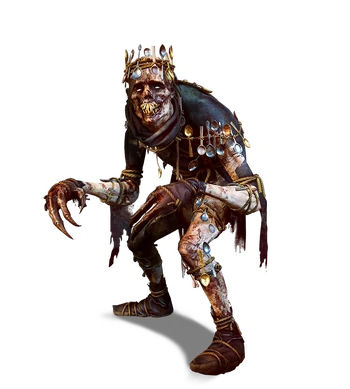
Wight
Wight is honestly just a term that basically means 'undead' or 'ghost', and it straddles the line between being pretty well-known as a monster name but not one that has a clear connotation in our head, not like 'zombie' or 'werewolf' or 'vampire' or 'ghoul'. Witcher III's wights basically make them into kind of like the far less aggressive members of the Nercophage family. It's explicitly noted that while they are certainly capable of fighting humans, they just want to be left alone to make brews in cauldrons and be left alone, even entering long months of hibernation. It's just that when they feel like their territory is threatened, it will fight aggressively and spit out barghests.
A variant that's encountered during the main story of Blood and Wine are the Spotted Wights, which is apparently a very dangerous larger variant that was supposedly driven to extinction by the Witchers. Admittedly the game bestiary doesn't tell us much about them beyond repeating what it said about the regular Wights (they're non-confrontational, they go into hibernation) so I'm not sure why the Witchers end up going out of their way to exterminate just the Spotted Wights and not like, any other monster in the world. The one Spotted Wight we do meet is actually a cursed human that got turned into a wight, and it's a bit hard to tell from just the picture here, but she's absolutely obsessed with spoons because her degenerated mind knows that spoons are involved in breaking her curse. I do like that she's basically resorted to lashing spoons all around her body and even wears a crown made of spoons, though.
___________________________
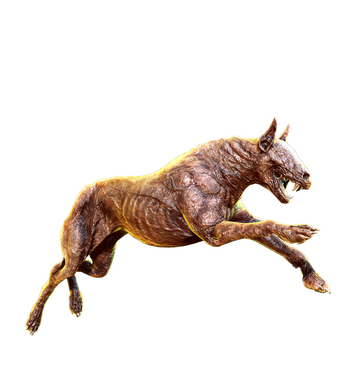
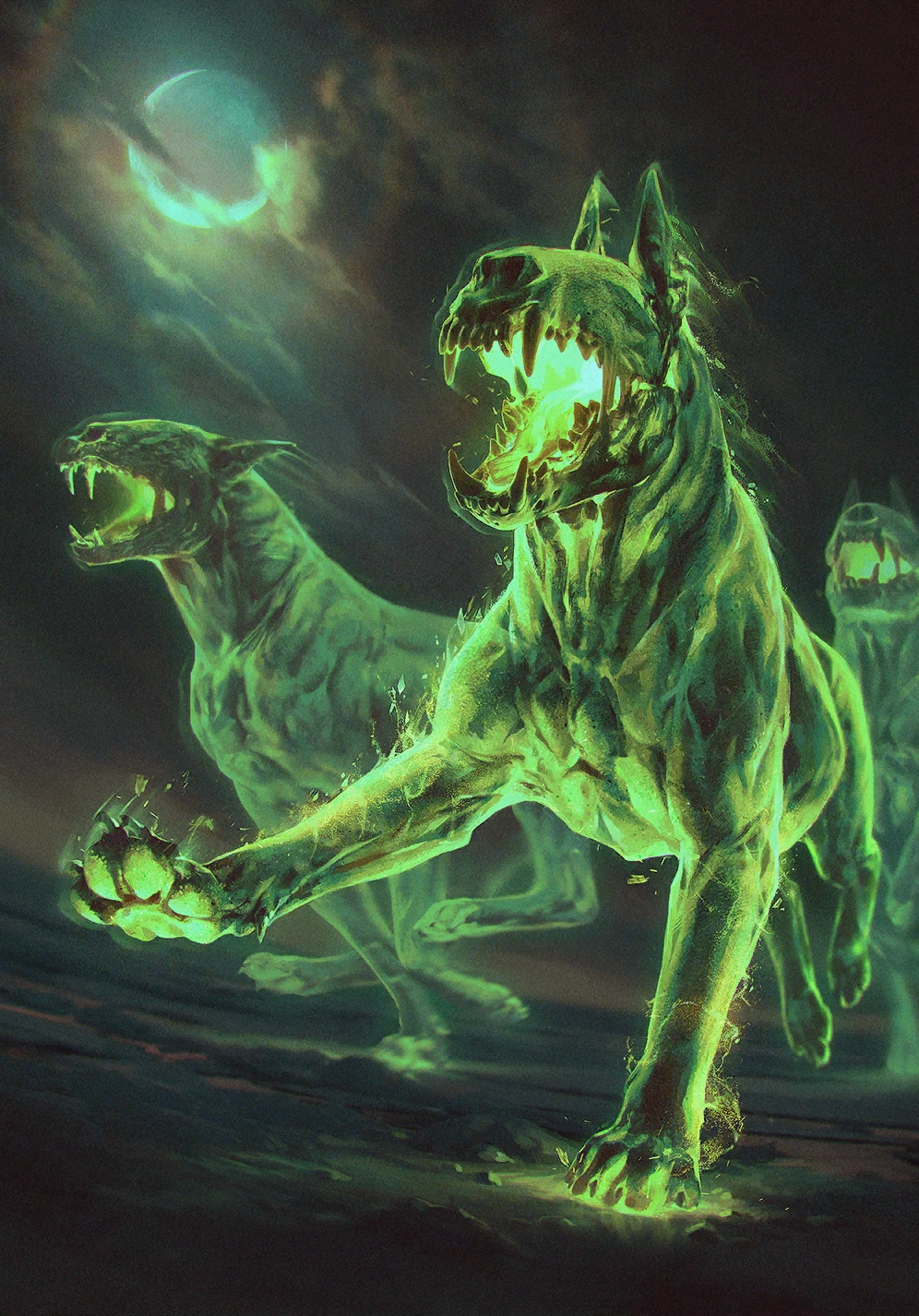
Barghest
Since we were talking about the wights summoning Barghests, let's talk about the Barghests! Based on a monstrous ghostly black dog from English folklore of the same name and a personal favourite from D&D, the Barghests in this case are just literally ghostly dogs. Interestingly, for a franchise that has an answer to most of the spooky weird creatures, the Barghest is one of the few non-boss enemies that the bestiary sort of shrug on what their origins are, with the bestiary being of two minds on whether the superstition of the Barghests being created out of the wrath of the gods sent to punish the wicked; or if they are simply connected to some sort of curse, a concentration of ill will or tragic events in the past like other specters. The actual game itself shows that Wights are able to spit out (no, literally spit out) globs of green ectoplasm that turn into Barghests, which offers yet another explanation.
They're pretty cool, honestly (especially since they're essentially a re-skin of pre-existing wolf models with some extra glowing effects and a fire-breath attack), and whether you run into a pack of them alone or if they're encountered alongside Wights, I really do appreciate the added variety of enemies.
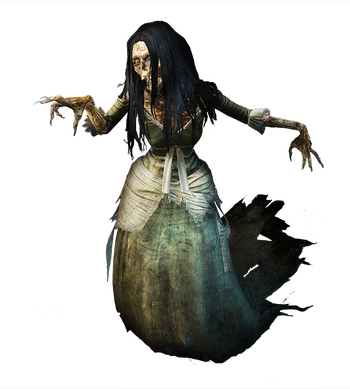
Banshee
Based on the iconic female spirits of Irish folklore, the Banshee (or 'Beann'shie', as the game sometimes spells it) reuses the exact model as the Noonwraiths and Nightwraiths in the base game. Their origins are also more or less the same, being trapped between life and death thanks to traumatic experiences. They're basically regular wraiths, but with two extra attacks -- the infamous 'banshee cry' that so many fantasy adaptations of the mythological banshee obviously gravitate towards, as well as the ability to summon around a half-dozen skeleton warriors to fight for her (I can't find any good pictures of the skeletons). Pretty neat little variation for sure!
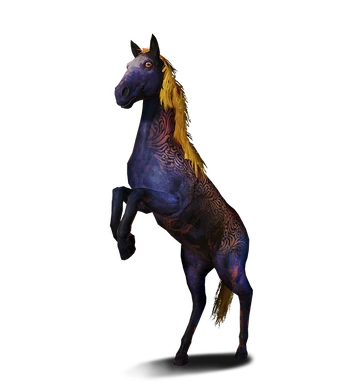
Umbra
This is a specific creature that you meet in exactly one side-quest, just like the Penitent or the Pesta in the base game. It's nowhere as malicious as any of those, though, and is more... lost and confused. The Umbra is the manifestation of a ghost that's trapped by guilt, unforgiven wrongs and an unclean conscience. The Umbra that Geralt meets is a human whose spirit manifests oddly in the form of a jet-black horse, who's consumed by guilt and appears night after night before the woman he had wronged to beg for forgiveness... but being a demonic, blood-sucking horse unable to speak, all the Umbra ended up doing is scare the poor hermit shitless. It's kind of interesting that the Umbra we meet is noted to actually lose control of his spirit body when he manifests and attempts to ask forgiveness. An odd one, for sure, but I absolutely love the quest involved with the Umbra.
This is a specific creature that you meet in exactly one side-quest, just like the Penitent or the Pesta in the base game. It's nowhere as malicious as any of those, though, and is more... lost and confused. The Umbra is the manifestation of a ghost that's trapped by guilt, unforgiven wrongs and an unclean conscience. The Umbra that Geralt meets is a human whose spirit manifests oddly in the form of a jet-black horse, who's consumed by guilt and appears night after night before the woman he had wronged to beg for forgiveness... but being a demonic, blood-sucking horse unable to speak, all the Umbra ended up doing is scare the poor hermit shitless. It's kind of interesting that the Umbra we meet is noted to actually lose control of his spirit body when he manifests and attempts to ask forgiveness. An odd one, for sure, but I absolutely love the quest involved with the Umbra.
___________________________
Relicts:
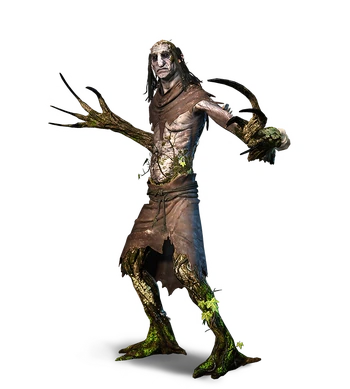
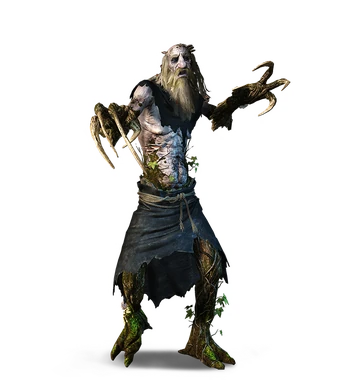
Spriggan
The 'Relicts', as usual, are a collection of unexplained ancient beings who really don't belong in any category. In the base game it's been home to the Leshens, Fiends and Godlings and whatnot, creatures that are less likely to be monstrous creatures from another world but rather just natural beings with unexplained power. The Spriggans (named after a faerie from Cornish myths) are explicitly noted to be a sub-species of Leshens, only instead of having a giant deer skull for a head, they have the visage of angry old men. Somehow this makes them look so much more disturbing and a lot less 'whoa what a cool enemy' in the way that the Leshen was. The Spriggans look just that bit too human, even wearing ragged pants, but then you see their almost stem-like feet and giant wood-claw arms and you realize that they're anything but.
In combat they're sort of similar to the Leshens, albeit with more plant-based abilities -- instead of just roots, I think they can also summon Archespores. Where the Leshens that have their own quests tend to either just be overzealous or enraged nature spirits, the one named Spriggan -- Grottore -- is explicitly noted to hunt down and eat children and collect their toys.
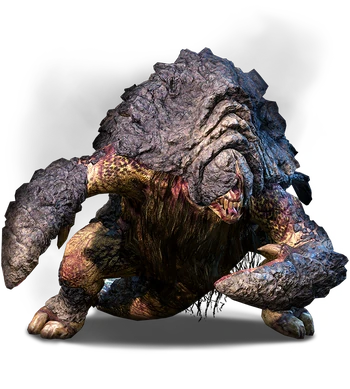
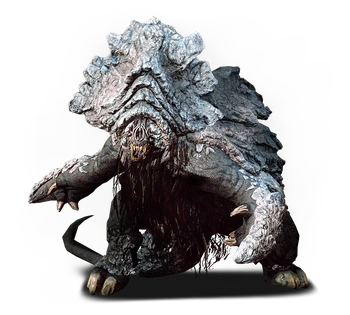
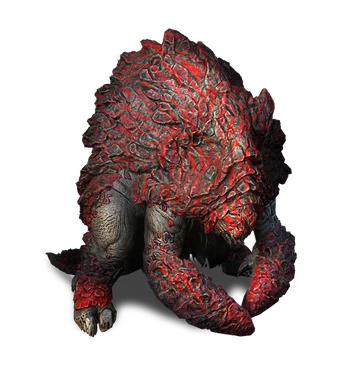
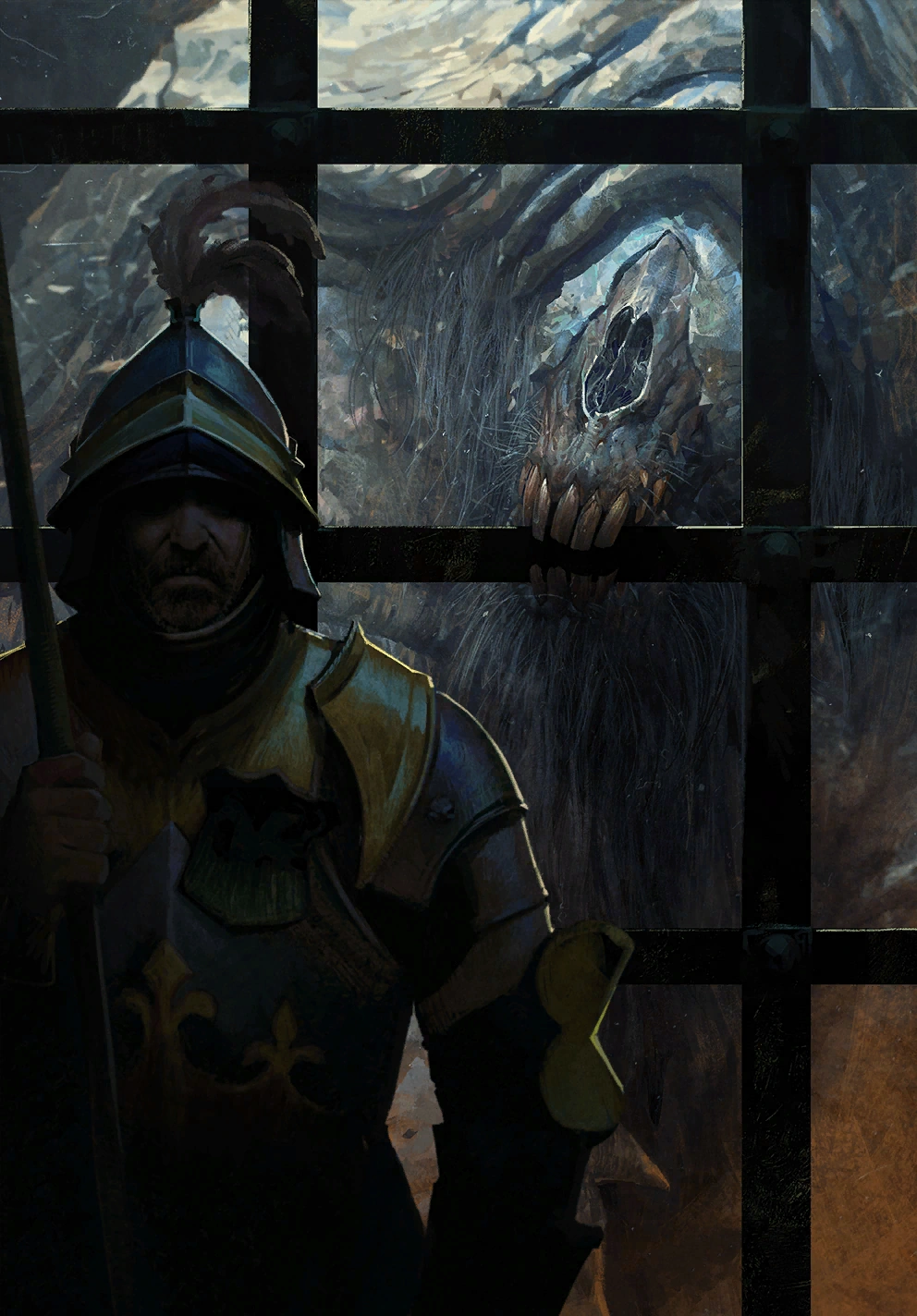
Shaelmaar
I am surprised this was classified as a 'Relict' instead of an Insectoid or a Hybrid monster. In the original translation of Witcher III they were called the 'Szarlej', and are based on a spirit from Slavic myths that appear in mines and act as guardians of the natural resources of the earth, manifesting usually as an elderly man with a long grey beard that can transform into animals like a mouse, dog, cat or goat. Witcher III's Shaelmaar, on the other hand, is... it sure is a kaiju beast, huh? Geralt himself describes the Shaelmaar in-game as 'a cross between a caterpillar and a mole, but as big as a barn'. Not quite a barn-sized creature, but it sure is a giant of a monster, and I absolutely love this thing. It looks kind of reptilian or mammalian, but it's got a dinosaur tail, no eyes, a pretty cool Nemesis-from-Resident-Evil mouth, a rocky carapace that resembles some sort of giant armadillo or beetle, and two giant scoop-blade arms. And it's got a giant mass of hair coming down from its chest, doubtless a reference to the beard that the mythological Szarlej has.
The Shaelmaar is noted to basically live deep, deep underground, making tunnels through the ground (which other bestiary entries note is part of an almost symbiotic relationship with giant centipedes, who also proliferate there and feed on the Shaelmaar's dung). But they sometimes burrow too deep to human settlements, causing cave-ins or tunnels that break into the many underground wine cellars in Touissant. They are also completely blind, finding their way by sensing vibrations, but are extremely tough. Absolutely nothing in Geralt's arsenal can pierce the Shaelmaar's rock-tough carapace, and in addition to unleashing shockwaves through the ground, they can also burrow in and out, they can turn themselves into an armoured spinning wheel of doom, or they can just hunker down and spin around like a deadly beyblade that launches rock shards all over the place. The way to defeat the Shaelmaar is to use the Aard sign (i.e. the force blast attack) to create a massive vibration and trick the Shaelmaar into rolling and slamming onto the wall of whatever cavern you fight him in, and then attack him while he's down. Trust me when I say that the game doesn't hold your hand through this, and I was absolutely baffled fighting him for fifteen whole minutes with nothing in my arsenal being able to wound the thing. I also absolutely love that compared to almost any other monster in the game, the Shaelmaar is always shown to be kind of like a regular wild animal, just confused and scared and most of the time Geralt having to put them down felt more like a sad necessity instead of a triumphant "fuck yea kill that nekker swarm and that golem and that evil man-eating griffin!".
The designers clearly loved the Shaelmaar, because he's got two 'boss' variants, each with their own modified in-game model. The second one in this picture is the 'Shaelmaar from the Emperor of Nilfgaard', a mouthy title. It's got a giant Pacific Rim enemy style of 'crown' similar to a Ceratopsian dinosaur, and is one of the first enemies you fight in Touissant, and Geralt is rightfully disgusted by the fact that they're using the wounded animal as entertainment for knights to slay in gladiatorial combat for entertainment purposes. The 'Monster of Tufo', meanwhile, for some reason has red blood-vessel-like streaks all over its rocky carapace, which just makes it look so much more cooler. Geralt identifies this one as a 'female matriarch', so maybe it's like the queen ant version of the species?
Probably my favourite monster from this expansion, if we're being honest.
___________________________
Ogroids, Elementa & The Land of A Thousand Fables:
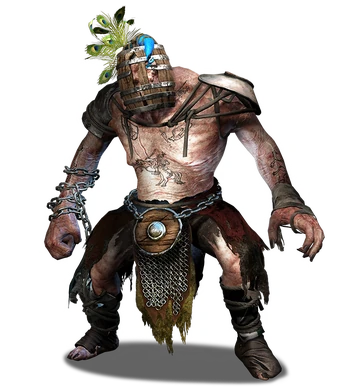
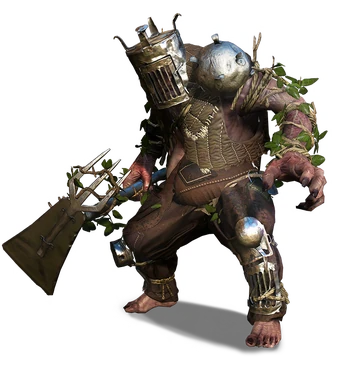

Golyat & Cloud Giant
I'm combining the Ogroid, Elementa and a bunch of miscellaneous enemies together because a lot of them are one-time bosses, and a lot of them are met only in a specific region -- the Land of a Thousand Fables, which is a magical illusory land that's supposed to be a playground for children based on children's fables, but ended up going absolutely insane thanks to the illusion having taken a fair amount of time. Many of the other creatures in the Land of a Thousand Fables are slotted into some of the other categories, but the sole notable Ogroids and Elementas are also tied to the Land of the Thousand Fables. (And I do want to save vampires for last)
So anyway, we get two brand-new giants, both of them being creatures you only fight once each. "Golyat" is actually a knight who got cursed into becoming a big-ass giant, and he's basically a combination to the David & Goliath story from the bible (complete with an easter egg achievement of one-shotting him if you crossbow his head) as well as to the legend of Don Quixote, who would attack windmills thinking they were giant. One of the first things Geralt sees in Touissant is exactly that... except the windmill actually does contain Golyat. Ultimately there's nothing all that memorable about Golyat, he's just a huge giant dude that's a reskin of the Cyclops and Frost Giants from the base game, but he was a pretty fun fight.
Ditto for the Cloud Giant, the 'twisted' version of the giant in the tale of Jack and the Beanstalk. He's got a cool Dark Souls boss helmet and he fights with a giant hoe-rake weapon, but ultimately he's kind of boring beyond being a cool setpiece as, well, a giant boss. I respect what they were going for with these giants, but just like the Frost Giant in the base game I really don't have much to say here.
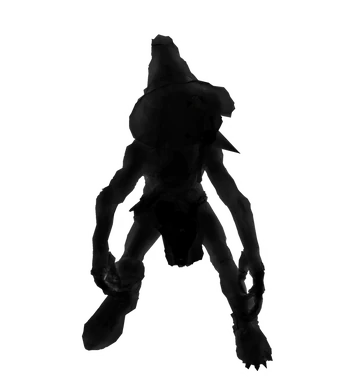
Pixie
The Pixies are classified as 'elementa' in the game, but are basically just gangly goblin-looiking dudes with hats that swarm around Geralt and act as the Land of a Thousand Fables' "antibody system" that attacks anyone who goes in. They do have kind of an interesting name since 'pixie' is traditionally associated with a specific and normally benign kind of faerie from Cornish folklore. It's neat that we get some variation, but the Pixies are just kind of shadow-gnome-goblin people that aren't all that different from the many palette-swapped enemies that Geralt fights sometimes.
The Pixies are classified as 'elementa' in the game, but are basically just gangly goblin-looiking dudes with hats that swarm around Geralt and act as the Land of a Thousand Fables' "antibody system" that attacks anyone who goes in. They do have kind of an interesting name since 'pixie' is traditionally associated with a specific and normally benign kind of faerie from Cornish folklore. It's neat that we get some variation, but the Pixies are just kind of shadow-gnome-goblin people that aren't all that different from the many palette-swapped enemies that Geralt fights sometimes.
"Look! Pixies!"
"We should go. Now."
"Come on, what harm can cute little pixies do us?"
– last words of two criminals who broke into the Land of a Thousand Fables, identities unknown
Pixies might look like gentle, harmless creatures, yet in their case, the saying about appearances being deceiving fits all too perfectly. The pixies from the Land of a Thousand Fables were created to protect that magic place from intruders and ensure the ducal daughters, Sylvia Anna and Anna Henrietta, did not come to even the slightest harm. Thus whenever anyone else crossed the pixies' path, it ended badly for them, for pixies are aggressive, war-like creatures, created to kill, defend and fight till they can fight no more.
"We should go. Now."
"Come on, what harm can cute little pixies do us?"
– last words of two criminals who broke into the Land of a Thousand Fables, identities unknown
Pixies might look like gentle, harmless creatures, yet in their case, the saying about appearances being deceiving fits all too perfectly. The pixies from the Land of a Thousand Fables were created to protect that magic place from intruders and ensure the ducal daughters, Sylvia Anna and Anna Henrietta, did not come to even the slightest harm. Thus whenever anyone else crossed the pixies' path, it ended badly for them, for pixies are aggressive, war-like creatures, created to kill, defend and fight till they can fight no more.
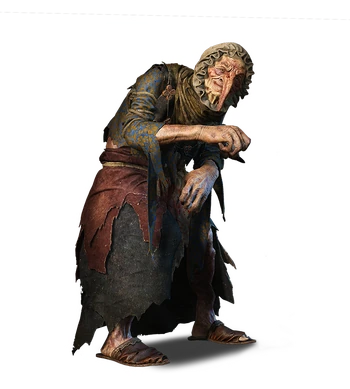
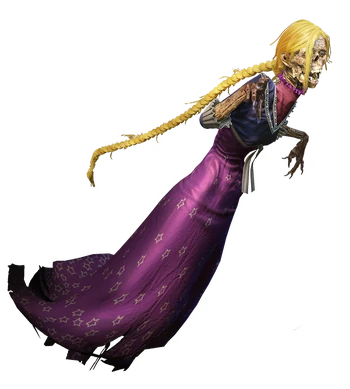
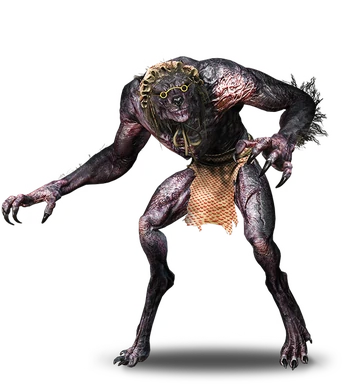
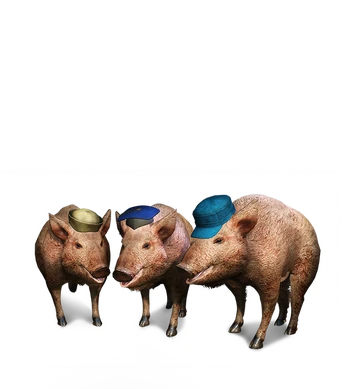
Wicked Witch, Longlocks, Big Bad Wolf, Three Little Pigs
Interestingly, all of these guys receive brand-new models, or at least a bunch of fun cosmetic changes. And for such a relatively short area in the Blood and Wine story (and one I absolutely and entirely missed during my first playthrough of the expansion), it's interesting just how much effort they put into making these guys. In particular has to be the Wicked Witch, a unique enemy (classified as a Relict, makes sense) with a pretty fun Zelda boss fight. The Wicked Witch's got a pretty nasty-looking crow-nosed crone face, and she fights you as she flies around her broom while a giant bubble protects her, and she alternates between summoning Archespores, ghost panthers or dropping her stew on you. Probably the only one among the fantasy-land bosses to actually fall into the 'Zelda boss' category that Shaelmaars or any of the named characters in Hearts of Stone can get to, and I definitely appreciate her a lot.
The other three named bosses that have entries in the bestiary (you fight the Three Bears from Goldilocks, too, but they are just regular bears apparently) don't really differ a whole ton from their base enemies. "Longlocks" is basically Rapunzel after she hung herself with her own hair, turned into a wraith. Big Bad Wolf is a werewolf with some grandma accessories. And the Three Little Pigs use the existing pig model with the A.I. of boar enemies. Pretty obviously, Longlocks is a specter and the others are beasts.
___________________________
Vampires:
And finally, we reach the actual star of the Blood and Wine expansion, vampires! The base game already had vampires to some degree, but they were all basically using the same bat-person model, with the Ekimmara being the go-to lesser vampire and the Katakans being the sentient, shape-shifting 'higher vampires'. Well turns out that these guys are the tip of the iceberg!
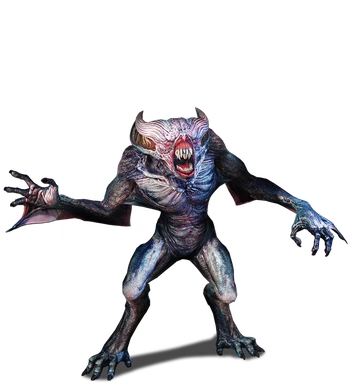
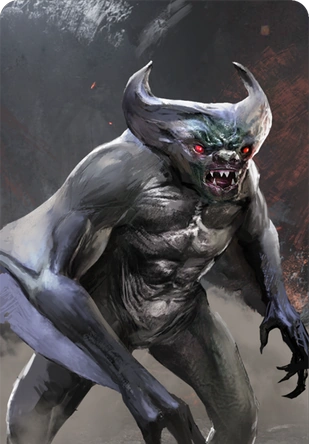
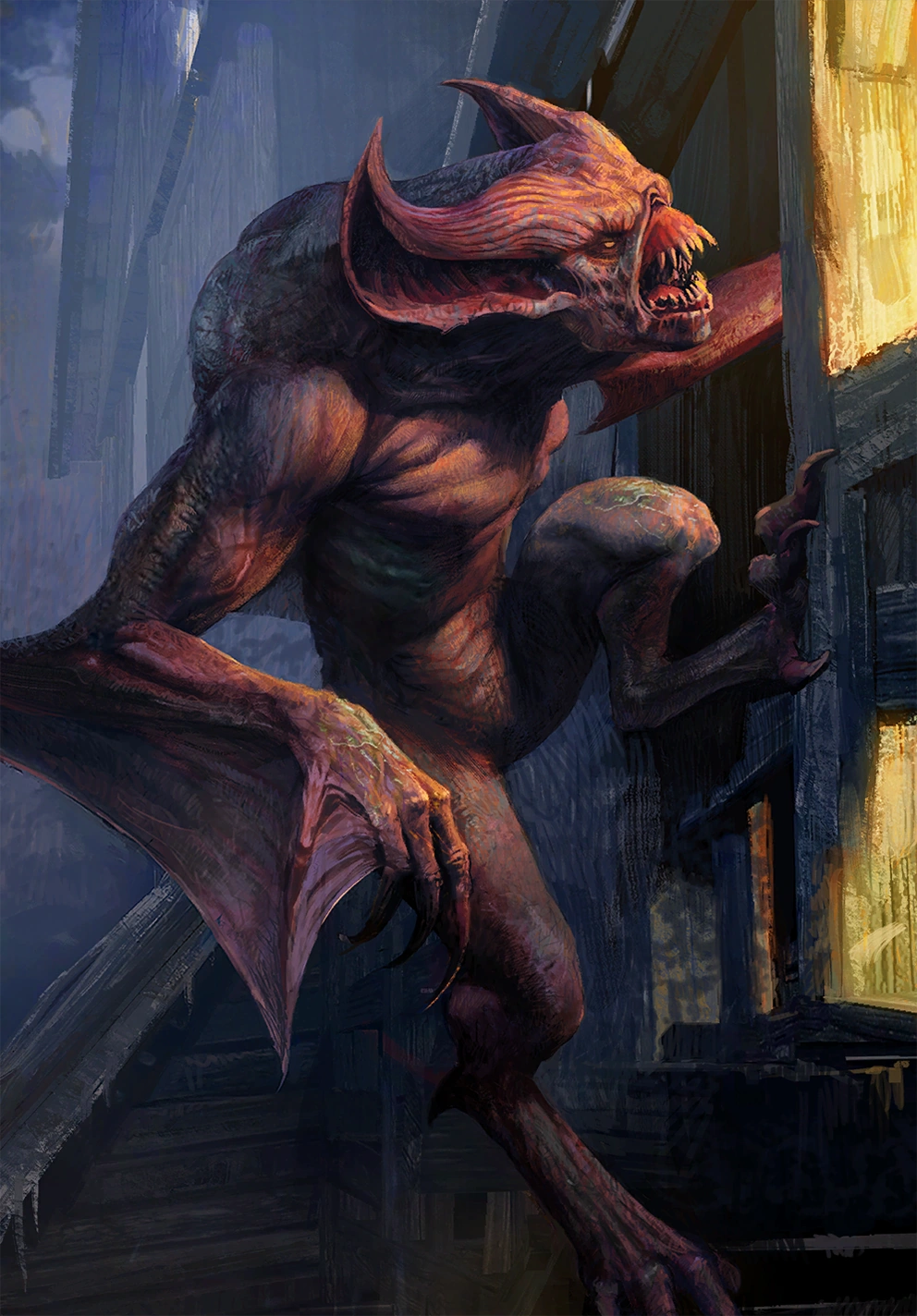
Fleder
We'll start off with the weakest creatures first, going by the very bestial Fleder. The original Polish translation calls these guys "Katawiec", which are based on black, winged creatures from Slavic folklore that originated from the souls of aborted children, and apparently also bring storms as they arrive. "Fleder", meanwhile... draws its name from fledermaus, the German word for 'bat'. The Fleders actually first appeared in the very first Witcher game, and... and, well, they are basically the brutish, animalistic were-bats of the vampire hierarchy.
They kind of really look like the Ekimmara/Katakan model, in a way, huh? Mutated, muscular naked humanoid with a hideous face that amplifies and exaggerates a bat's features. Only instead of the more elaborate ears and leaf-like nose of the Ekimmara, the Fleder goes for one of those bats whose ears are curved and sort of merge together with its head and gives the impression of horns. The end result does make this design's mouth be the center of attention, and if not for those Gwent artwork picking out the eyes, I would've talked about how the Fleder is a cool 'blind bat' design. The eyes are there, they're just really small. I do like that the Fleder's arms still has some tiny, seemingly vestigial wings -- I don't think these guys can fly, either. The silhouette of this thing and most importantly the face is pretty dang cool, though.
The Fleders are noted by the bestiary to basically be the lowest rung in terms of vampire-hood, but they are still dangerous simply because they are so much more powerful than a regular human... and they are really, really savage. Again, I really do like that Witcher's lore actually tries to take various vampiric tropes from both mythology and pop culture and assign them into different sub-specieses of the same big race.
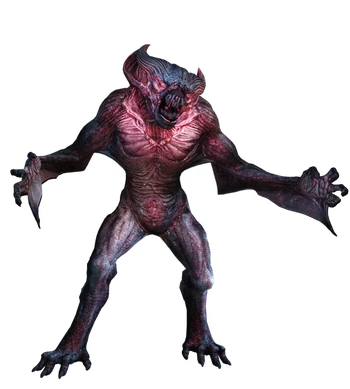
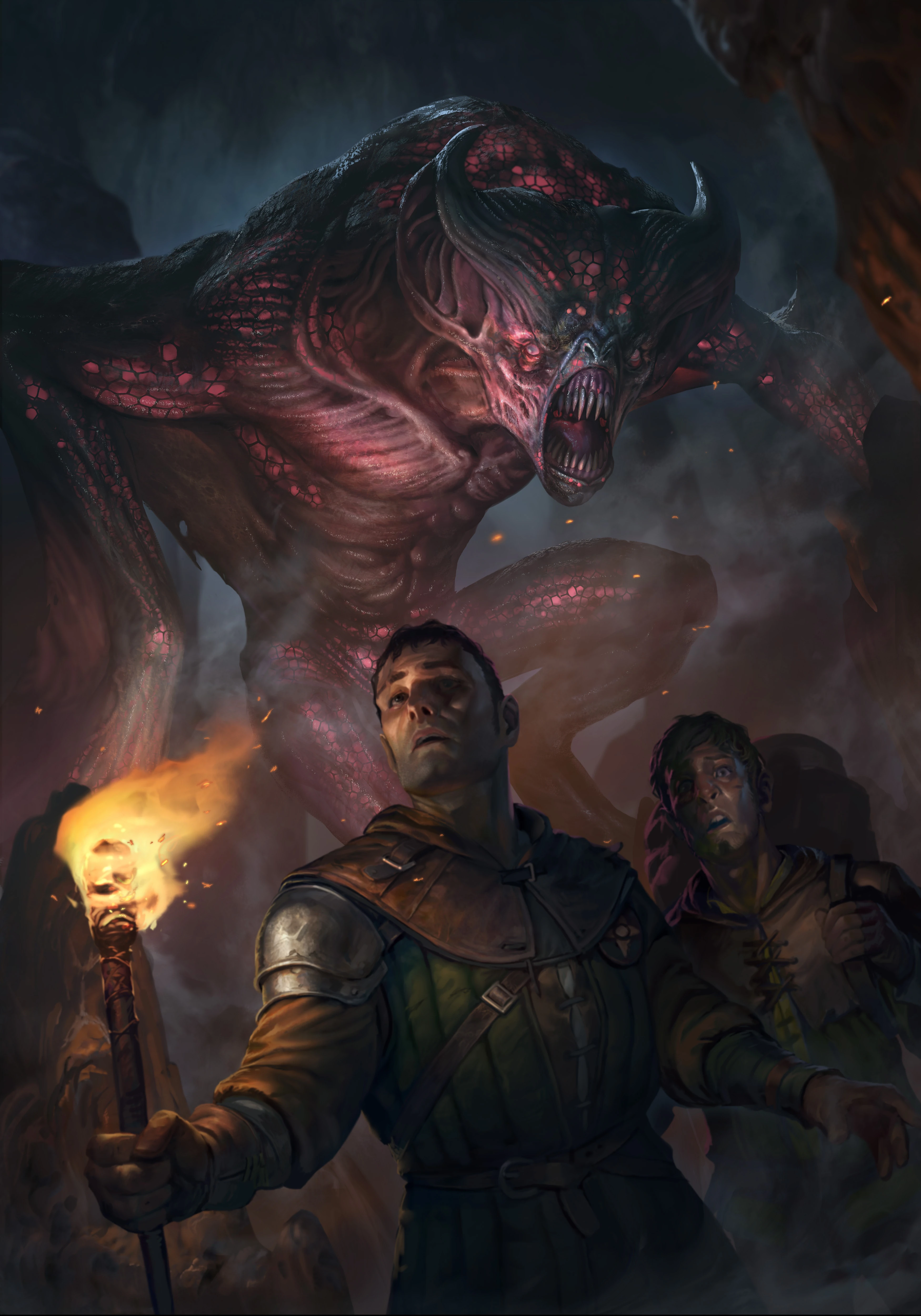
Protofleder
Classified as a completely different creature by the bestiary and even by Geralt, the Protofleder is a bit of a tie-in to the origin of all these monsters in the world of the Witcher -- the whole Convergence thing. Depending on the paths you pick, Geralt might stumble into a massive secret Elder Vampire lair that also turns out to be the location where the vampires first landed on the world of the Witcher from their original plane. And among the creatures that reside there are these Protofleders, which look like regular Fleders but have a bright glow from within their body. They fight like regular Fleders and I really wished they could've shown more differences instead of 'these ones glow!'... but I do like the idea that the vampires, necrophages and whatnot that Geralt meets in his journeys aren't even the original creatures that crossed over.
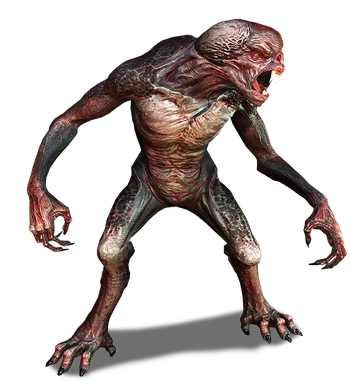
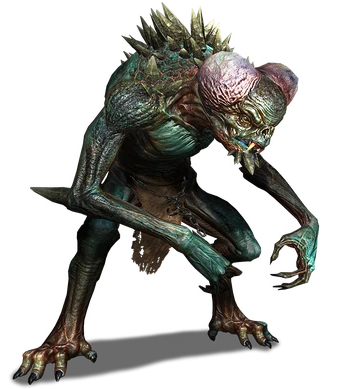

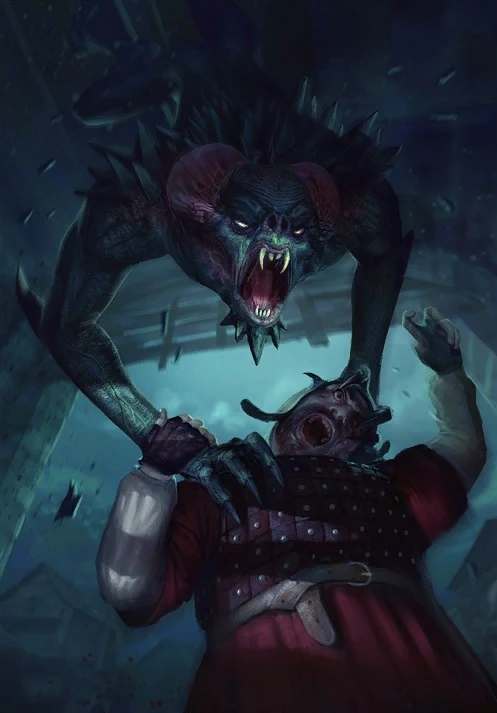
Garkain
The Garkain is... actually kind of the most boring vampire, in my opinion. The Fleder and Ekimmara have very memorable visages and general body designs. The Garkain is just a gangly creature with bulbs on his head instead of ears or horns. The Alpha Garkain that Geralt meets exactly once in a side-quest has a lot of cooler spikes and larger boob-ears, which makes it a bit cooler, but... I dunno, I'm just not feeling either one of these. It's nice to have a bunch of extra enemies, of course, but I kinda feel like this is just a bit of a slightly-different-looking Fleder.
Borrowing their name and not much else from an Australian Aboriginal mythological creature, Witcher III's Garkain is basically another one that's just brute force and brutality, but not much in terms of intelligence. As the bestiary entry and the game itself notes, the Garkain's biggest claim to fame is the fact that they really love mutilating their victims, not content to just drink their victim's blood but to deliberately 'tear their victims to shreds with great delight and muck about in their bloody entrails'. In combat, they can apparently stun people with a 'burst of mental energy', but I honestly don't remember ever seeing a Garkain ever do that.
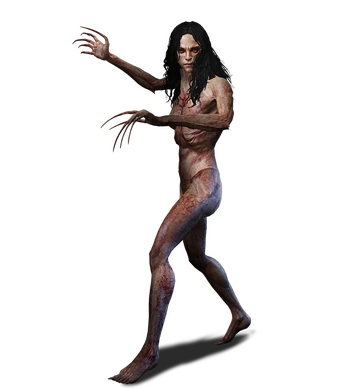
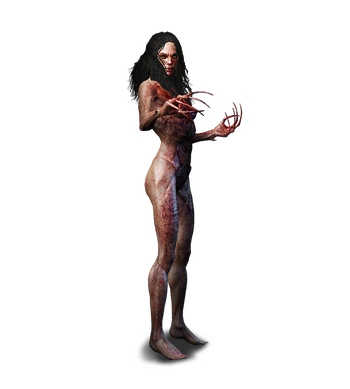
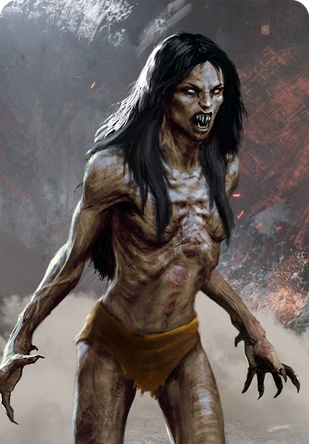
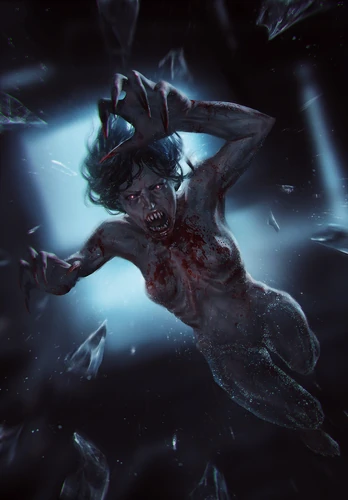
Bruxa
Definitely one of the most famous vampire-type in the Witcher series and prominently featured in the very first novel, The Last Wish as well as all three games (although the second game turned the Bruxae into some sort of demonic specter), the Bruxae are pretty prominent here, and are probably the first of the common 'higher vampires' alongside the Alps and Katakans of the base game. And I say 'higher vampires' because unlike every other vampire type, the Bruxae are certainly sentient, able to talk, and most definitely able to transform into a human guise. In typical Witcher fashion, Bruxae parade around as sexy buxom women (sometimes naked!) before they reveal their true self -- wrinkled demonic-women with emaciated torsos, fangs, and massive claws. They go for a far, far more horrific corpse-like look whereas the first two games went for a Sadako-style specter, but either way it's still a pretty neat monster trope.
Bruxae are apparently highly associated with birds, and in most missions that you meet a Bruxae, there's a nice little detail that birds will be swarming around the area. In addition to being able to transform into humans, they are also deathly powerful, extremely fast and also turn invisible. In video game lingo, they turn invisible and teleport and beat you up... unless you have the right Moon Dust grenade that will coat them in silver powder and make them available as a silhouette. The Bruxa can still fuck you up, sure, but at least you can see her coming.
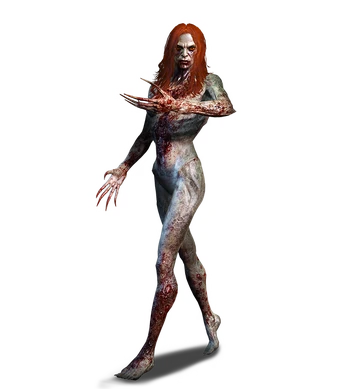

Alp
Based on a malicious being from Germanic folklore that's associated with sleep paralysis (equitable to an incubus or a vampire), the game itself even lampshades how the Bruxae and the Alp are pretty dang similar. The first game's Bruxae and Alp were a lot more distinct in appearance, with the Alp in the first game being covered with giant bloody warts (or bloody holes) on her chest, stomach and lower limbs... but Witcher III's Alp makes the blood-red dots a lot more subtle and turned them into what appears to either be blood splotches or little scars. And the end result makes Witcher III's Alp just look like a particularly unhygienic Bruxa, which makes it a bit hard to consider the two really all that distinct.
Based on a malicious being from Germanic folklore that's associated with sleep paralysis (equitable to an incubus or a vampire), the game itself even lampshades how the Bruxae and the Alp are pretty dang similar. The first game's Bruxae and Alp were a lot more distinct in appearance, with the Alp in the first game being covered with giant bloody warts (or bloody holes) on her chest, stomach and lower limbs... but Witcher III's Alp makes the blood-red dots a lot more subtle and turned them into what appears to either be blood splotches or little scars. And the end result makes Witcher III's Alp just look like a particularly unhygienic Bruxa, which makes it a bit hard to consider the two really all that distinct.
The Alp's bestiary entry really makes them out to be something interesting. They're called 'phantoms', their modus operandi is to torment and haunt men with nightmares. They can turn into animals, their saliva can make one fall asleep... but none of this absolutely shows up ever in-game. None of these are the subject of a fun little side-quest like, say, that one Leshen quest where it 'marks' a girl. It's not even foreshadowing or utilized in a side-quest, nope. Alps are basically "Bruxa, but with a sonic scream". Lame.
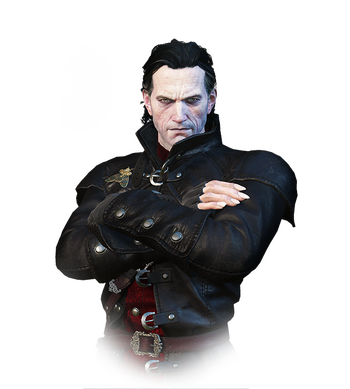
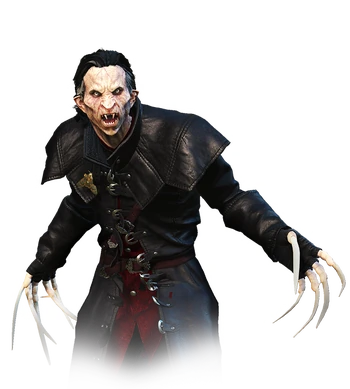
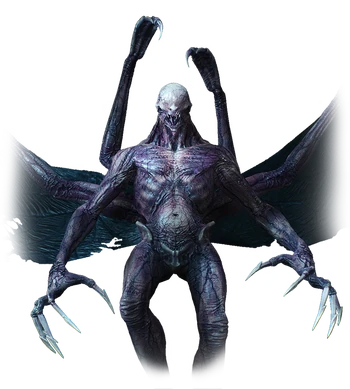
Higher Vampire
And so we fall into the category of the "Higher Vampires", which are basically near-godlike beings with immense power. We already saw a higher vampire in the novels, Geralt's friend and ally Regis (who also shows up here) but Blood and Wine really ramps up just how much more powerful they are, and how much more powerful the three (possibly four) named Higher Vampires we meet in Blood and Wine are. Regis himself, primary antagonist Dettlaff, Orianna (later apparently retconned to a Bruxa?) and the Unseen Elder -- the latter this uber-Nosferatu creature that you can't even hope to start to fight, merely negotiate with.
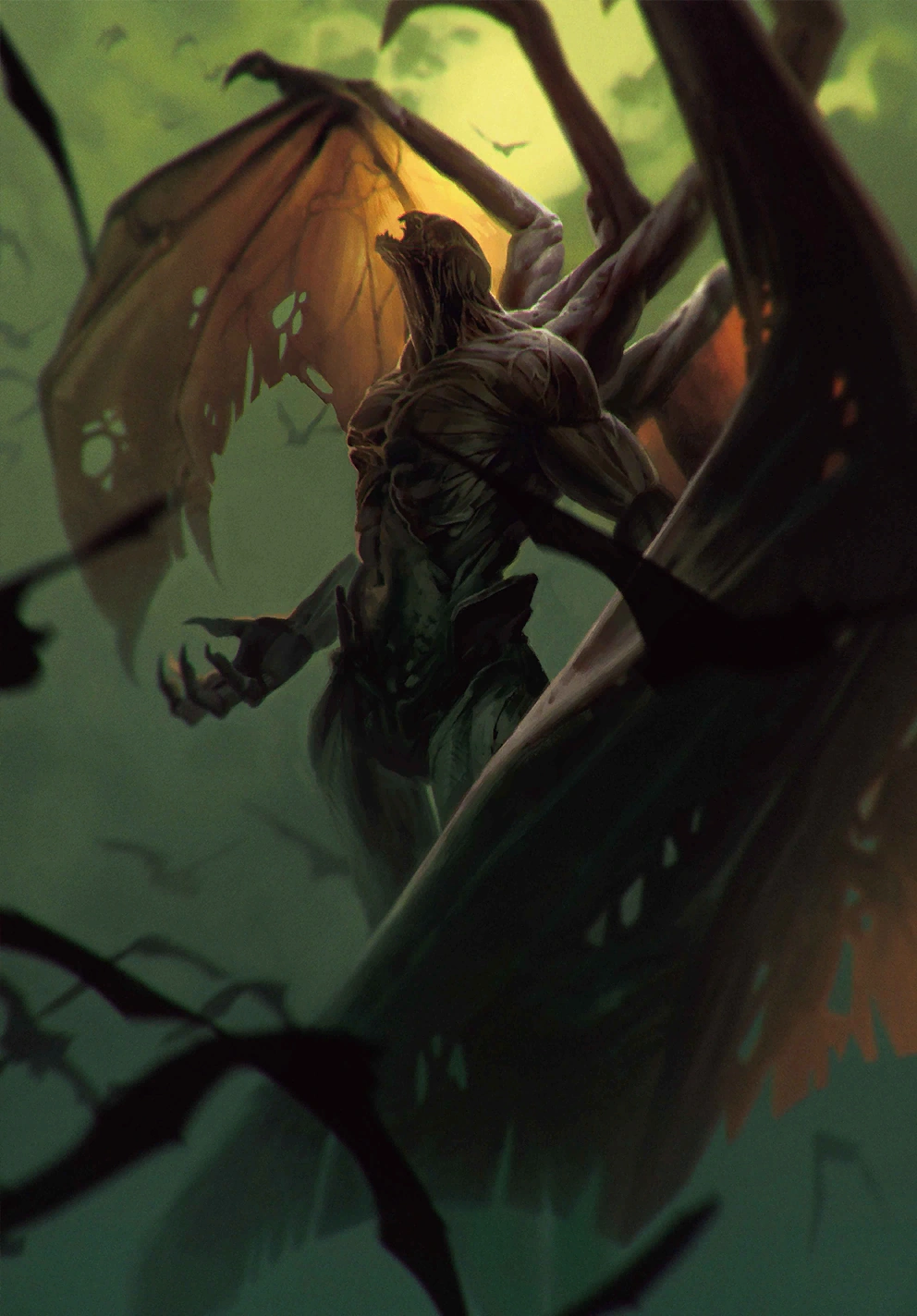
And, well, this is the vampire as a lot of modern fantasy work like to display them as. Suave. Handsome. Dresses impeccably well with a dash of goth. Deep sexy voice. Highly intelligent. You can't tell them apart from regular humans. Maintains a masquerade. And the execution of Dettlaff is amazingly well-done. Where the primary antagonist of Wild Hunt, Eredin, ends up feeling more of a threat because he's got a lot of resources to back him up (and once the boss fight happens Eredin's actually kind of a chump one-on-one) and Hearts of Stone has an unbeatable god-like being in Gaunter O'Dimm (who you don't fight so much as survive his dimension and trick), Blood and Wine makes Dettlaff a pretty great antagonist in that in addition to all the great detective work involved in trying to figure out Dettlaff's motivations and if he's operating alone, he also absolutely outclasses Geralt in his first meeting. Between a pretty badass Nightcrawler-esque teleportation, the ability to walk on air, the ability to turn into fog and all that jazz, the first time Geralt realizes that the mysterious "Beast of Beauclair" he's been sent to deal with isn't just any vampire, but a true Higher Vampire... it's pretty damn badass.
And then we get revelation piled on top of revelation. Higher Vampires can basically regenerate from any wound they have, and even Geralt's old buddy Regis, presumed to have been killed in the novels, survived -- it just takes time; only a Higher Vampire can permanently get rid of another of its kind. And They all have superpowers or quirks of sort -- Regis's is his curiousity... and Dettlaff's is the ability to command lesser vampires, something that he definitely shows off to great terror when he unleashes a massive vampire army to lay siege onto the capital city of Beauclair. And yet the game also shows off just how vulnerable someone so intelligent and so ultimately human in his motivations can be, because up until the last couple of missions, it's clear that Dettlaff is being merely strung along and manipulated by his emotions. Unlike the off-screen, bland psychopath Eredin or the god-like-you-can't-comprehend-me Gaunter, casting a Higher Vampire in the role of the villain and describing so much about him makes him so much more relatable and likable as a character.
And, well, he is also a very, very awesome boss fight. And unlike other boss fights in this game, we actually get a Resident Evil/Legend of Zelda style multi phase boss fight as Dettlaff grows even more and more angry at Geralt. After first fighting him briefly in his human form, Geralt fights him in what seems to be the 'default' higher vampire form, withhis face turning a bit more monstrous and bat-like, and his arms growing into massive claws. And he's basically a ratcheted-up Bruxa in this form, able to become invisible, moving fast and hard, and... and, okay, look, those Lady Deathstrike arms just look absolutely fucking badass, all right? Easily my favourite form, although the next one certainly gave this one a run for its money.
And then beat Dettlaff up enough and he transforms. And hoo boy, what a painful looking transformation that is. Two gigantic flesh-bone-spikes rip straight out of his back, he loses his eyes as his face and head elongates and becomes more monstrous, before the rest of his body just explodes and his massive, long claws and bat wings burst out of what remains of his clothes. Suddenly you realize that, hey, as much as these Higher Vampires' human and 'clawed human' forms are what they seem to prefer to walk into, they can and will turn into something that looks like the most powerful kind of whatever these Fleders and Ekimmaras are. And what a grand fight it is! Summoning bat swarms, creating swirls of blood that surround him or bursting out of the ground...
...and then there is a final phase, and I'm genuinely not sure if this is a symbolic representation of a fever dream that Geralt is having after Dettlaff bit him, or if Dettlaff did actually use his Higher Vampire powers to transform the location into an eldritch dimension with a swirling red stormy sky, and giant veins that create an arena undoubtedly meant to represent a giant heart. With Dettlaff's main body seemingly regenerating in an emrbyonic-sac-like cocoon, a massive pulsating blood-clone of Dettlaff's monster form fights Geralt... and turns out that fighting bloodlaff is a distraction, and Geralt has to destroy these giant blood-sacs or whatever, all the while being hounded by bloodlaff. It's a genuinely creepy and satisfying final boss for sure, and, again, whether it's a true transformation of the terrain or not, it's still a very atmospheric and cool ending.
____________________________________________
...and that's it for Witcher III! Honestly, it's really hard to tell just how much more I loved the Blood and Wine storyline over the previous two... and I really loved Hearts of Stone, too. But the vibe surrounding the duchy of Touissant, the lore about the vampires and the associated characters... they really do know how to write a great villain in the expansions, which is easily one of my biggest problems with the vague-vagueness-they-are-coming of the titular Wild Hunt. Again, I kind of wished that they probably could've added just one or two more extra vampire types. Maybe one that's just a giant bat? That's basically the Katakan, I know, but the Katakan are almost always just crawling around, I kinda wished that they had one that moved more like the draconids in the game. And maybe a couple extra intelligent Bruxa/Alp enemies? Still, not going to complain all that much. A pretty fun bestiary addition for sure!
No comments:
Post a Comment